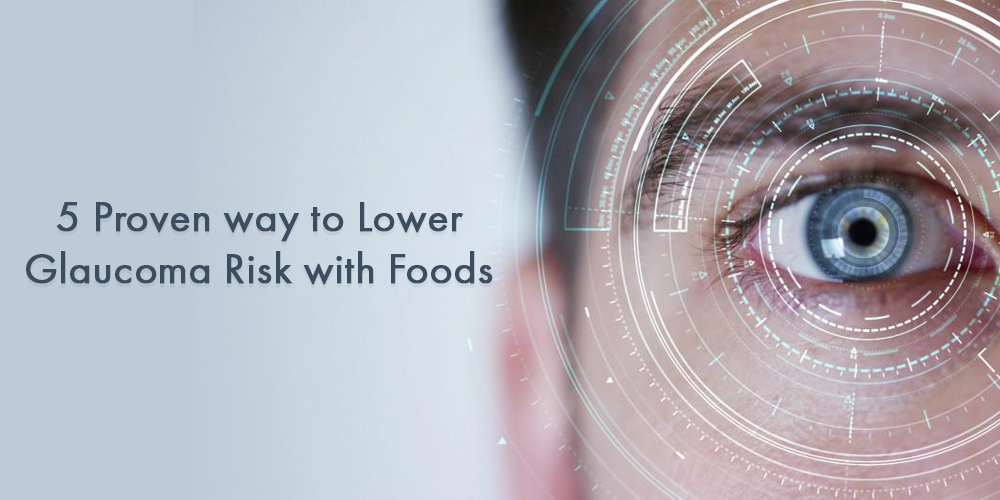Glaucoma leads to incurable blindness. There are no early warning signs. Half of people with the disease don’t realize they have it. Changing your diet can cut your risk.
Glaucoma is the second leading reason for blindness in the world after cataracts. It’s a neurological issue that prompts disintegration of the optic nerve which linked your eyes to your brain. In the end it prompts irreversible blindness.
It’s estimated that 60 million people on the world and three million in the U.S. have glaucoma. In any case, just 50% of those with the condition know they have it. The reason isn’t known and there are no early warning signs or symptoms.
High risk group incorporates people more than 60, those with a family history, diabetics, and individuals who are seriously partially blind. Having light colored eyes is another risk factor. Blue or dark eyes are bound to endure harm contrasted with green or hazel. The least unsafe eye color is brown.
One major risk factor is an increase in intraocular pressure (IOP). Another is the poor guideline of bloodstream to the optic nerve. Oxidative harm may also contribute to the condition.
There is no remedies for glaucoma. Medication treatments focus on bringing down the pressure in the eye. In any case, that won’t generally avoid further movement of the condition.
Newer research indicates different natural substances may prove helpful in treating glaucoma. Studies focus around natural way to relieve IOP, improve bloodstream to the eye, and decrease oxidative pressure. What’s more, the outcomes demonstrate that improving your diet can reduce your risk of developing glaucoma.
Eating more fresh foods and vegetables high in vitamins A and C is connected to a lower risk. So are foods high in carotenoids.
An NIH study distributed in the American Journal of Ophthalmology found that ladies who ate at least 3 servings for every day of all fruit juices reduced their chances of having glaucoma by 79 percent contrasted with the people who devoured under 1 serving for each day.
People getting the largest amounts of nutrient C sliced their risk by 70 percent. High intakes of nutrient A cut risk by 63 percent, and alpha-carotene by 54 percent.
See More: Is the Best Way to Preserve Our Youth Eating Green and Clean Food?
1. Kale
The NIH examine found that eating at least three servings of vegetables for each day didn’t have any impact on glaucoma rates. Yet, certain vegetables recounted to an altogether different story. Eating kale every week could cut your risk of glaucoma by 57 percent.
leafy greens in your diet were connected to a 20 percent to 30 percent lower glaucoma risk. The link was even stronger for a type of glaucoma connected to poor bloodstream. In those cases, nitrates cut risk by 40 to 50 percent.
2. Wild-Caught Salmon
In a study of glaucoma patients and their healthy siblings, British specialists found that glaucoma patients had lower levels of eicosapentaenoic (EPA), and docosahexaenoic (DHA) unsaturated fats and absolute omega-3 long-chain polyunsaturated fatty acids. The analysts recommended that EPA and DHA could balance debilitated fundamental microcirculation and visual bloodstream and optic neuropathy, which are related to glaucoma.
In addition wild-caught salmon, other great sources of EPA and DHA include fatty cold-water fish like sardines, mackerel, herring, and tuna.
Go to here: https://www.careprost.co/what-did-you-learn-from-latisse-while-you-use-it-to-boost-eyelash-growth/
3. Black Currants
A randomized, placebo-controlled, double-masked two-year preliminary uncovered that black currant anthocyanins hindered the visual field weakening. Analysts believe the black currants help normalize bloodstream in the eye.
4. Goji Berries
High intraocular pressure leads to the loss of vision by destroying retinal ganglion cells (RGCs) in the retina. An ongoing animal study demonstrated the medicinal herb Lycium barbarum L., otherwise called the goji plant, ceased the loss of RGCs and the neurodegeneration in the retina found in glaucoma. The advantages were free of eye pressure. at the end of the day, the goji advanced RGC survival despite raised eye pressure. Animals fed a goji remove about completely got away from pressure initiated loss of RGCs.
5. Eggplant
Researchers studied male volunteers who were asked to eat 10 grams from Solanum melongena L. (eggplant). Results demonstrated the eggplant decreased intraocular weight by 25 percent. The authors proposed that eggplant would be of advantage to patients experiencing glaucoma.
Thank you for being our post reader, for your good information, if your nearby friend or a family member needs to bimatoprost for growing eyelashes or glaucoma treat then must suggest it from our store, its current sale in Careprost USA started on our site so, don’t forget to order generic lumigan eye drops online from a reputable store.
Read Also: Complete Guide On How To Grow Eyebrows With Vaseline

